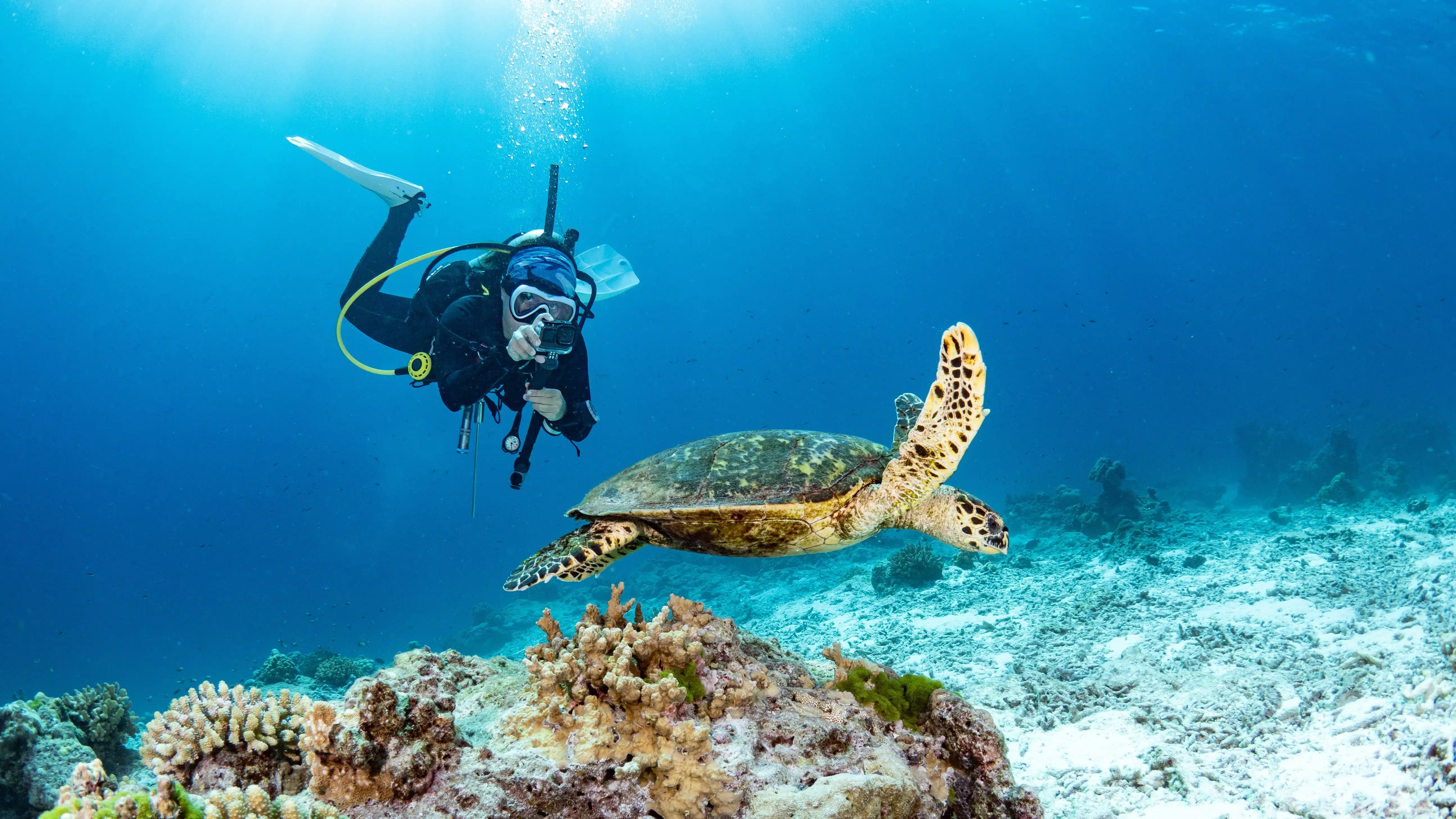Diving live-aboards offers an unparalleled opportunity to explore the underwater world in comfort and style, providing direct access to some of the planet’s most coveted dive sites. These floating bases allow enthusiasts to wake up at different dive spots each day, maximizing immersion time and providing unique experiences in remote locations. From the vibrant coral gardens of the Solomon Islands to the shark-infested waters of the Bahamas, this guide curates the top liveaboard destinations around the globe. Each selection is tailored for those who seek to merge adventure with the tranquility of life at sea, offering insights into making the most of these extraordinary journeys.
1. Solomon Islands
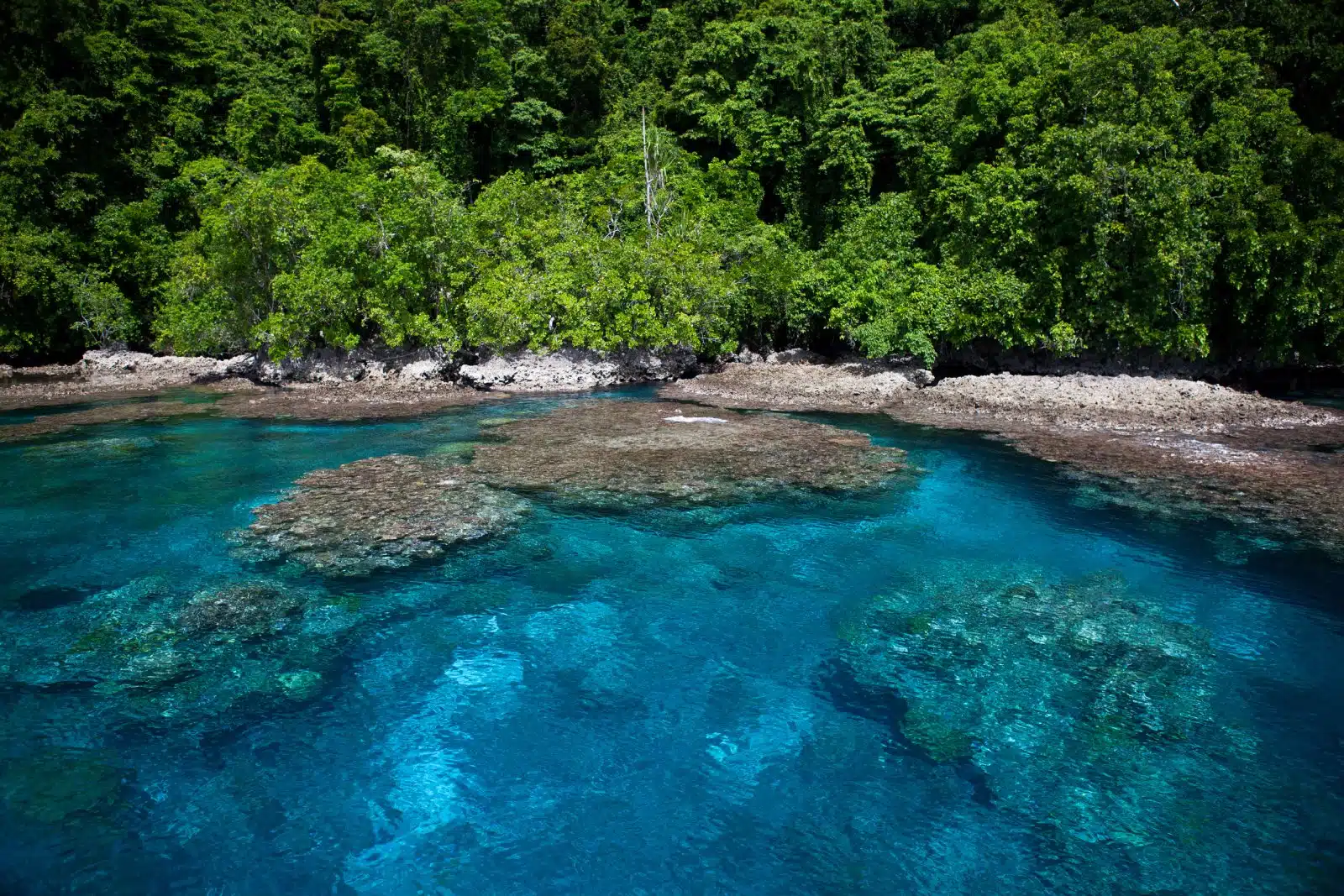
Image Credit: Shutterstock / Ethan Daniels
The Solomon Islands emerge as a premier destination for liveaboard diving enthusiasts seeking an authentic and pristine underwater experience. This archipelago, nestled in the South Pacific, is distinguished by its historical significance, hosting numerous World War II wrecks beneath its crystal-clear waters alongside thriving coral ecosystems. The biodiversity here is unparalleled, with dive sites offering encounters from the minuscule pygmy seahorses to vast schools of barracuda amidst lush coral gardens and steep drop-offs. The remoteness of the Solomon Islands ensures the preservation of its underwater magic, providing divers with a unique opportunity to explore one of the few remaining untouched marine environments in the world. Liveaboards serve as the only conduit to this isolated paradise, offering a range of diving experiences catering to the history aficionado and the biodiversity enthusiast.
Insider’s Tip: Make sure your liveaboard itinerary includes a visit to Mary Island (Mborokua), known for its pelagic action and the chance to dive with schools of jacks, barracudas, and the occasional hammerhead shark. Dive with the extraordinary Tina and Oli on https://www.bilikiki.com/.
When to Travel: The prime time for diving in the Solomon Islands is during the dry season, from April to December, when visibility is at its best and the seas are calm.
How to Get There: The journey to the Solomon Islands typically begins with a flight to Honiara, the capital, accessible from major cities in Australia and other Pacific nations. From Honiara, liveaboard operators usually handle the transfers to the departure point.
2. Galápagos Islands, Ecuador
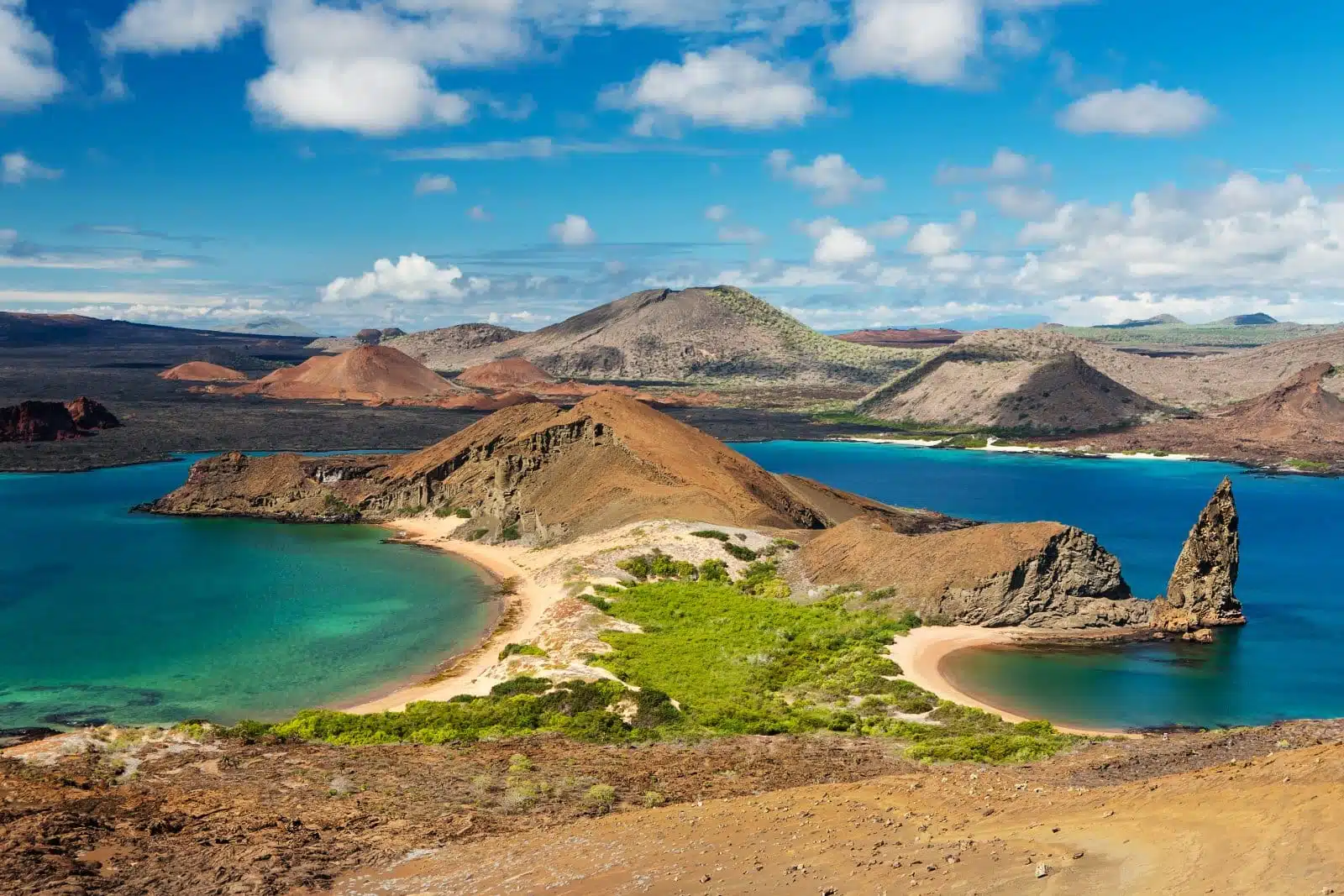
Image Credit: Shutterstock / npavlov
The Galápagos Islands offer access to the unique evolutionary processes that occur in isolation, offering divers a chance to witness endemic species that exist nowhere else on Earth. The liveaboard experience in the Galápagos is unparalleled, navigating through the archipelago’s remote islands to bring divers face-to-face with an array of marine life influenced by the confluence of several major ocean currents. These nutrient-rich waters attract diverse marine life, from schooling hammerhead sharks to playful sea lions and the elusive whale shark, making every dive an unforgettable adventure. The islands’ conservation commitment ensures this unique ecosystem’s protection, offering divers clear waters and healthy reefs. A liveaboard trip to the Galápagos is much more than a mere diving expedition, offering a comprehensive exploration of one of the most dynamic marine environments on the planet.
Insider’s Tip: Opt for a liveaboard that offers land excursions to fully appreciate the Galápagos’ unique biodiversity. Encounters with giant tortoises and blue-footed boobies complement the underwater experience.
When to Travel: The best diving conditions are from June to November, when cooler waters attract a greater diversity of marine life, including whale sharks.
How to Get There: Fly into Quito or Guayaquil, Ecuador, and then take a domestic flight to the Galápagos. Liveaboards typically depart from San Cristóbal or Santa Cruz islands.
3. Great Barrier Reef, Australia
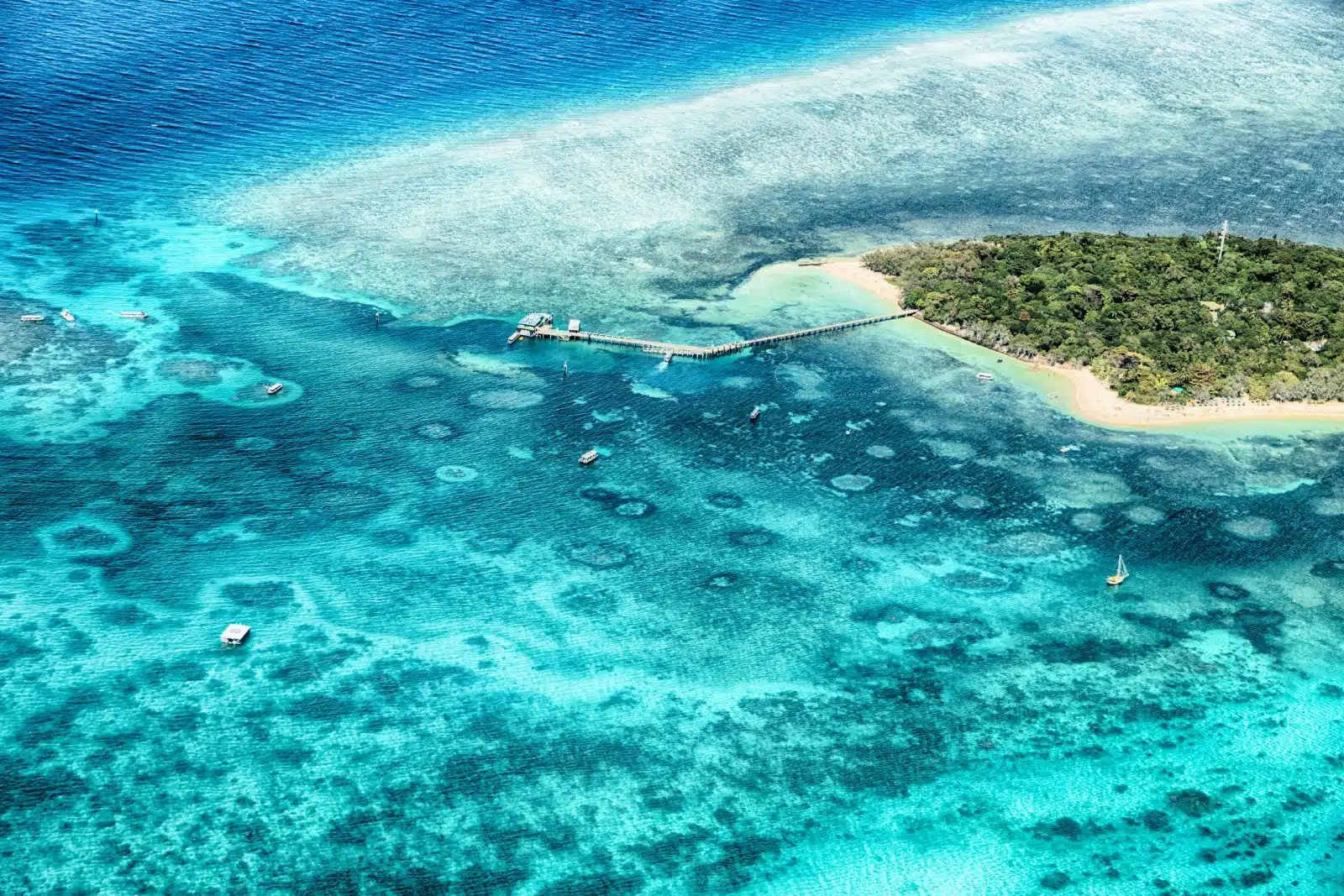
Image Credit: Shutterstock / lkpro
The Great Barrier Reef, recognized as the world’s largest coral reef system, offers a kaleidoscope of marine biodiversity across its vast expanse. Liveaboards provide divers access to the reef’s remote outer regions and iconic dive sites, which are otherwise inaccessible, including the renowned Cod Hole and Ribbon Reefs. The reef’s biodiversity encompasses a myriad of marine life, from the vibrant coral gardens teeming with a multitude of fish species to the enigmatic night dwellers that emerge under the cover of darkness. The Great Barrier Reef’s extensive range of diving experiences caters to divers of all proficiency levels, making it a quintessential destination for those seeking to immerse themselves in one of the most celebrated underwater landscapes in the world.
Insider’s Tip: Select a liveaboard that includes a visit to the Coral Sea for the chance to dive sheer walls plunging thousands of meters into the abyss, home to sharks and large pelagics.
When to Travel: Diving is year-round, but the best conditions are from June to December, with whale season peaking from July to September.
How to Get There: International flights arrive in Cairns, the primary gateway to the Great Barrier Reef, where most live-aboards depart.
4. Raja Ampat, Indonesia
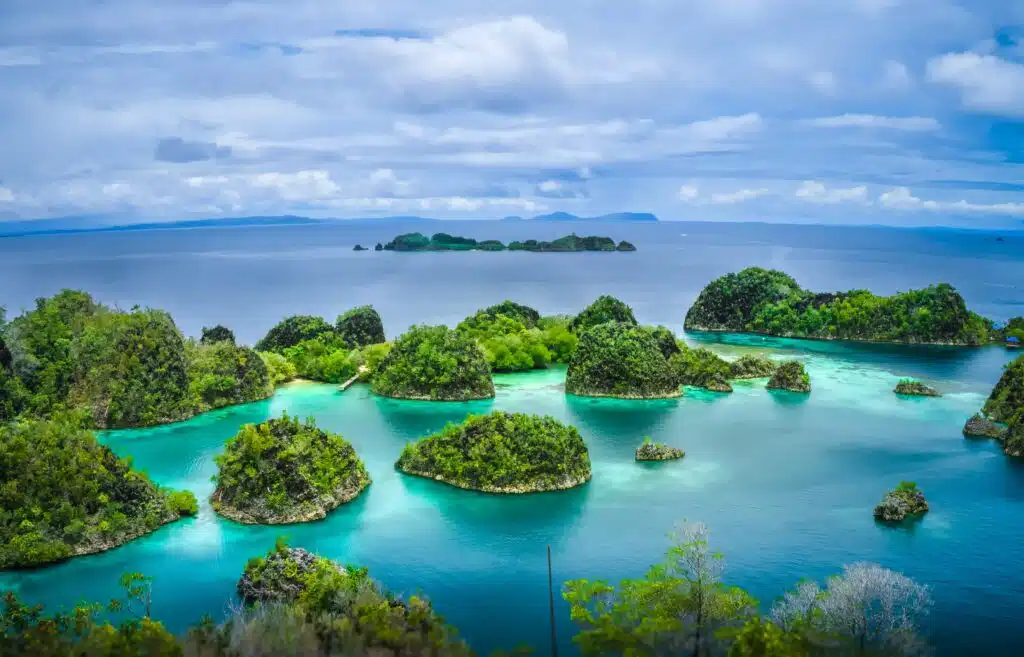
Image credit: Shutterstock / Igor Tichonow
Raja Ampat, located at the heart of the Coral Triangle, is celebrated for its exceptional marine biodiversity, boasting the highest recorded numbers of coral and fish species globally. This region offers divers vibrant underwater landscapes characterized by kaleidoscopic reefs, underwater pinnacles, and an astonishing array of marine life. Raja Ampat’s isolation ensures the preservation of its underwater treasures, allowing divers to explore a virtually untouched marine environment. The area’s live-aboards facilitate access to well-known and secluded dive sites, offering an immersive experience into this unparalleled diving destination’s rich biodiversity and natural beauty.
Insider’s Tip: Look for a liveaboard that explores both the northern and southern parts of the archipelago to experience the full range of diving Raja Ampat offers. Amira is a favorite amongst divers https://www.amira-indonesia.com/.
When to Travel: The prime diving season is from October to April when seas are calmest and visibility is at its best.
How to Get There: Fly to Sorong via Jakarta or Bali. Live-aboards usually depart from Sorong, with transfers often included from the airport.
5. Maldives

Image credit: Shutterstock / Krzysztof Odziomek
The Maldives is synonymous with idyllic beauty above and below the water. This tropical paradise offers clear blue waters, vibrant coral reefs, and abundant marine life, making it a favored destination for liveaboard diving. The atolls are particularly renowned for their encounters with pelagic species, such as manta rays and whale sharks, attracted by the warm, plankton-rich waters. Liveaboards in the Maldives extend beyond the reach of resort-based diving, exploring untouched reefs and thilas where marine life flourishes in abundance. The Maldives’ liveaboard experience is characterized by its diversity. It offers everything from serene reef dives to exhilarating drift dives and night dives, showcasing the underwater world in all its splendor.
Insider’s Tip: Choose a liveaboard that includes the South Ari Atoll in its itinerary for the best chance of swimming with whale sharks.
When to Travel: For manta rays and whale sharks, visit between November and May when the plankton blooms attract these giants.
How to Get There: International flights land in Malé, from where live-aboards depart. Some itineraries may require a domestic flight or seaplane to reach the departure point.
6. Palau, Micronesia
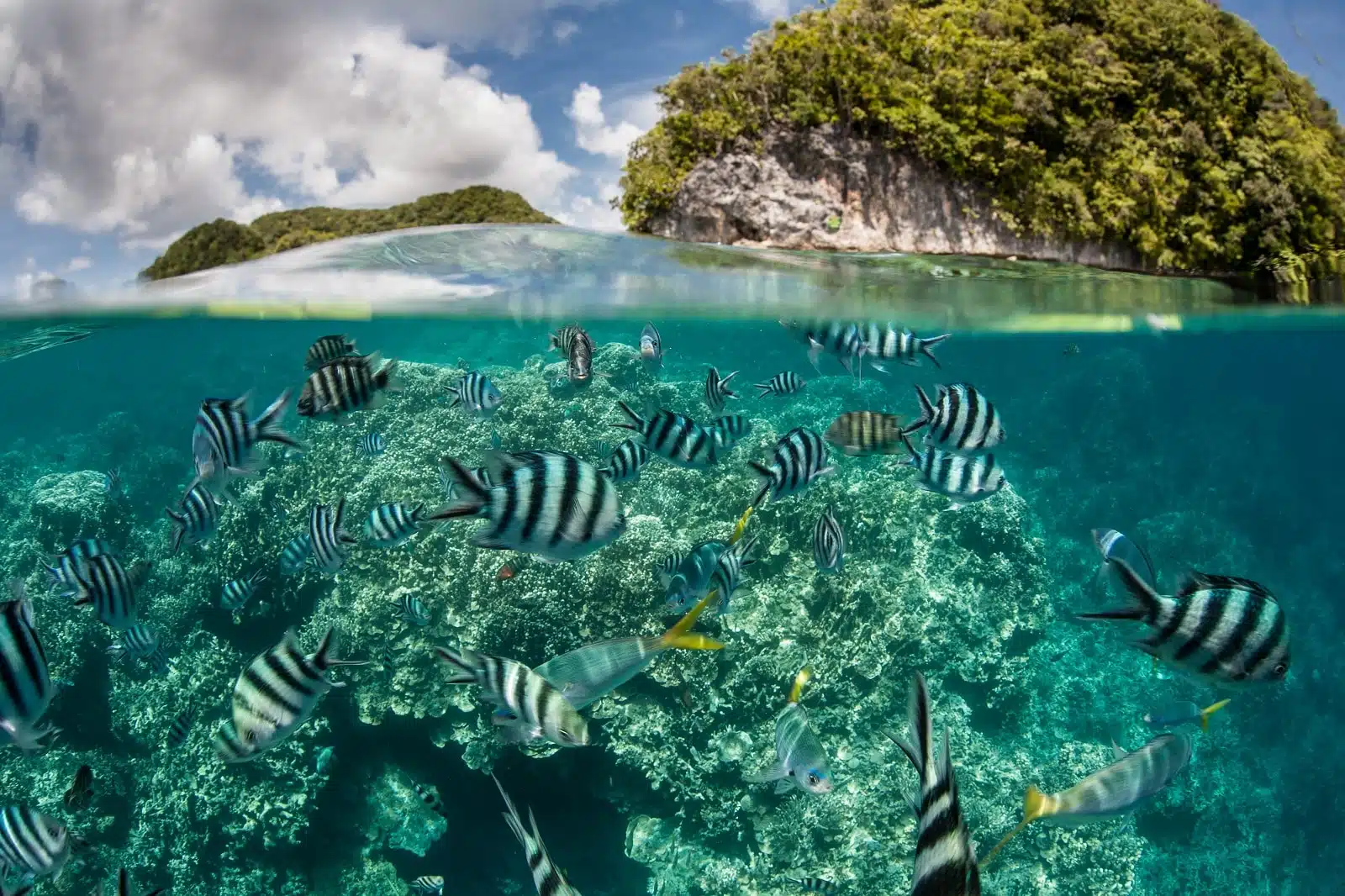
Image Credit: Shutterstock / Ethan Daniels
Palau offers diverse diving experiences, from exhilarating drift dives and historical WWII wrecks to unique marine lakes. The islands’ distinctive topography creates varied dive environments, home to a rich variety of marine species. Liveaboards in Palau provide exclusive access to remote dive sites, including the renowned Blue Corner, celebrated for its shark encounters, and the ethereal Jellyfish Lake. Palau’s liveaboard experience is about the opportunity to explore one of the world’s most ecologically significant and beautifully preserved marine environments.
Insider’s Tip: Ensure your liveaboard includes a visit to Peleliu Island, known for its historical significance and spectacular wall diving.
When to Travel: The dry season from November to April offers the best diving conditions, with calm seas and high visibility.
How to Get There: Fly to Koror, Palau, via Guam, Manila, or other regional hubs. Live-aboards typically depart from Koror.
7. Bahamas
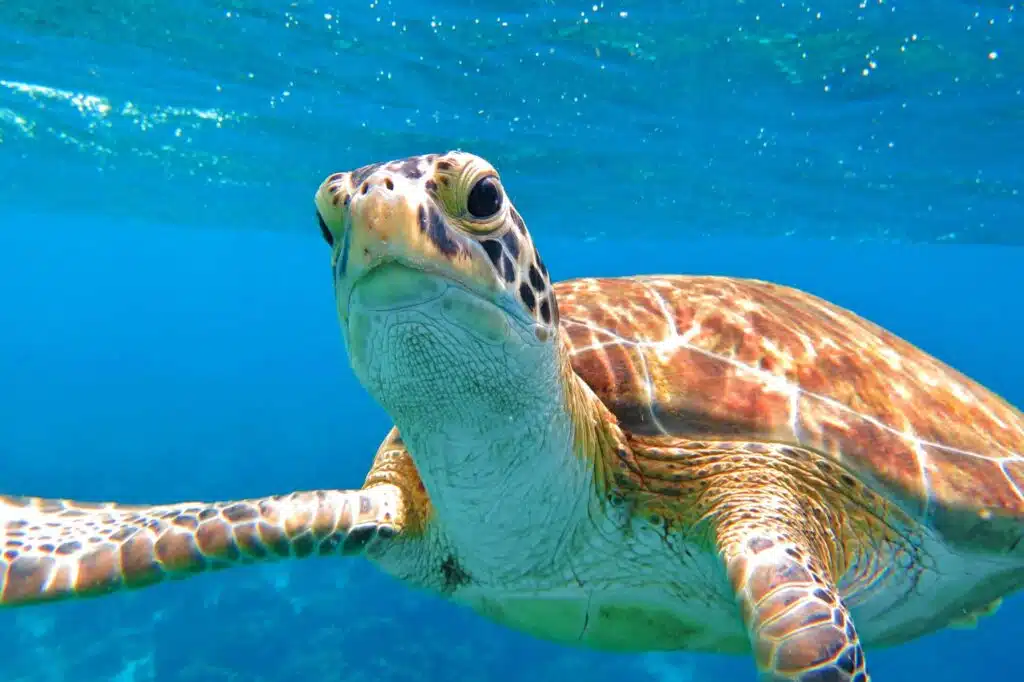
Image credit: Shutterstock / blue-sea.cz
Renowned for its crystal-clear waters and thrilling shark encounters, the Bahamas is a premier destination for divers seeking close interactions with these majestic predators. The archipelago’s live-aboards venture to the Exumas, Eleuthera, and Cat Island, offering a variety of diving experiences from blue holes and vibrant coral reefs to wall dives. The Bahamas’ warm waters and excellent visibility enhance every dive, providing immersive experiences with the archipelago’s abundant marine life. Liveaboard diving in the Bahamas is characterized by its focus on shark encounters, offering divers a unique opportunity to observe these creatures in their natural habitat.
Insider’s Tip: For an unforgettable experience, choose a liveaboard that offers dives at Tiger Beach, where close encounters with tiger sharks are almost guaranteed.
When to Travel: The best time to dive in the Bahamas is from November to May, when the weather is calm and underwater visibility is at its peak.
How to Get There: Most live-aboards depart from Nassau or Freeport, accessible by international flights from the United States and other parts of the Caribbean.
8. Red Sea, Egypt

Image credit: Shutterstock / Ihor Bondarenko
The Red Sea is celebrated for its vibrant coral reefs, teeming marine life, and historical wrecks, making it a legendary diving destination. Liveaboards offer the chance to explore this underwater paradise, accessing remote and pristine dive sites that showcase the Red Sea’s unparalleled beauty. From the world-renowned Thistlegorm wreck to the shark-infested waters of the Brothers Islands, the Red Sea offers a diverse range of diving experiences. The clear waters and spectacular reefs provide a backdrop for some of the most visually stunning dives in the world, making the Red Sea a must-visit destination for divers.
Insider’s Tip: Opt for a liveaboard that includes the northern wrecks and reefs itinerary for a mix of historical dives and vibrant coral gardens.
When to Travel: Diving in the Red Sea is excellent year-round, but the best conditions are from March to May and from September to November.
How to Get There: Liveaboards typically depart from Hurghada or Sharm El-Sheikh, both accessible by international flights from major European cities.
9. Cocos Island, Costa Rica
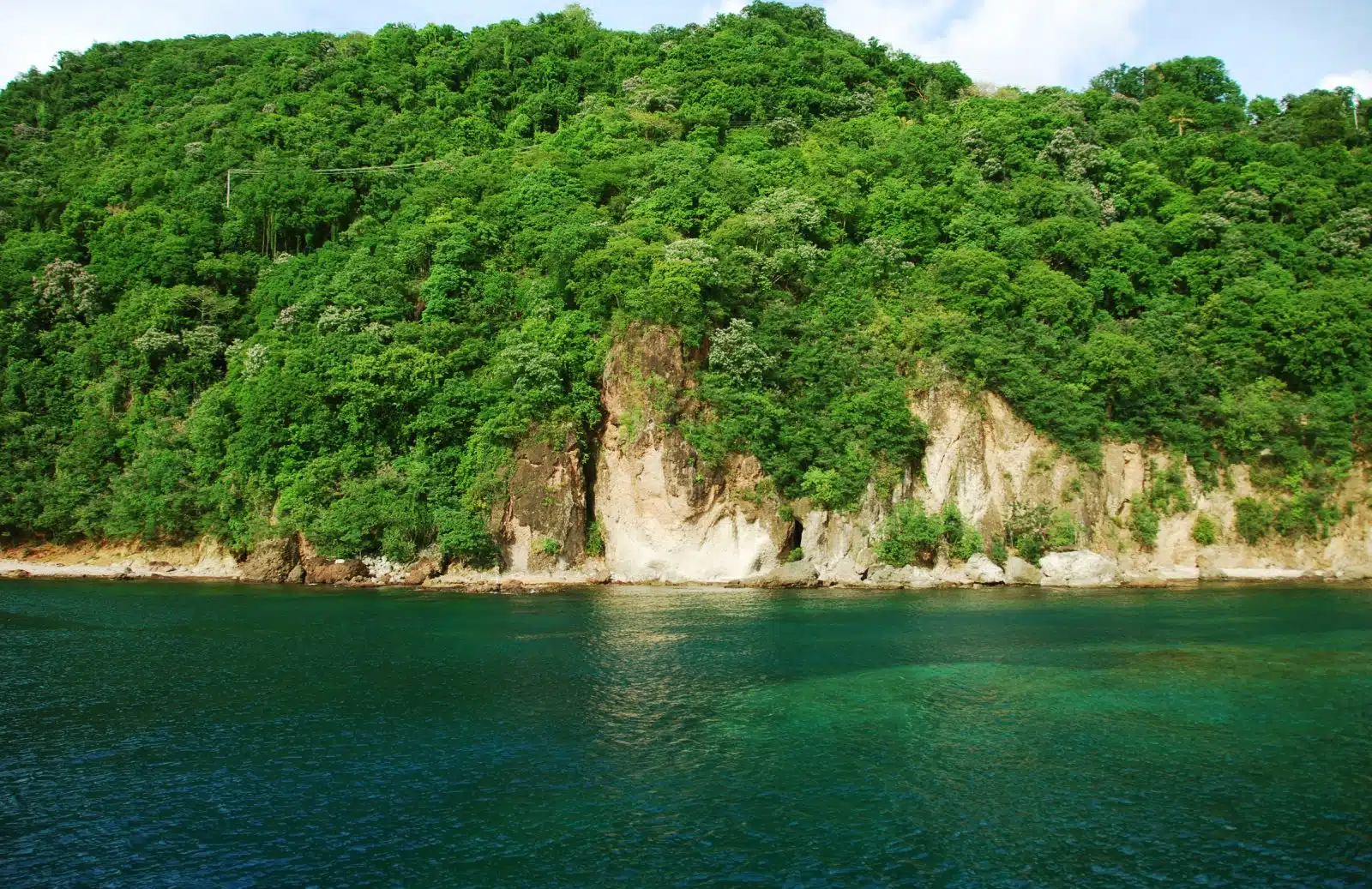
Image Credit: Shutterstock / Danita Delimont
Cocos Island offers a sanctuary for divers seeking encounters with large pelagic species in the open ocean. This remote island’s nutrient-rich waters attract schooling hammerheads, manta rays, whale sharks, and, seasonally, humpback whales. The challenging dives and strong currents around Cocos Island cater to experienced divers, offering a unique opportunity to explore one of the last untouched marine environments on the planet. Liveaboard trips to Cocos Island are an adventure into the unknown, where each dive reveals the majestic beauty of the ocean’s giants.
Insider’s Tip: Bring a good camera setup to capture the spectacular schools of hammerhead sharks, a signature sight at Cocos Island.
When to Travel: The rainy season from June to December offers the best chance for large pelagic encounters due to the increased nutrient levels in the water.
How to Get There: Fly to San José, Costa Rica, where liveaboard operators typically arrange a charter flight or boat to Cocos Island.
10. Komodo National Park, Indonesia
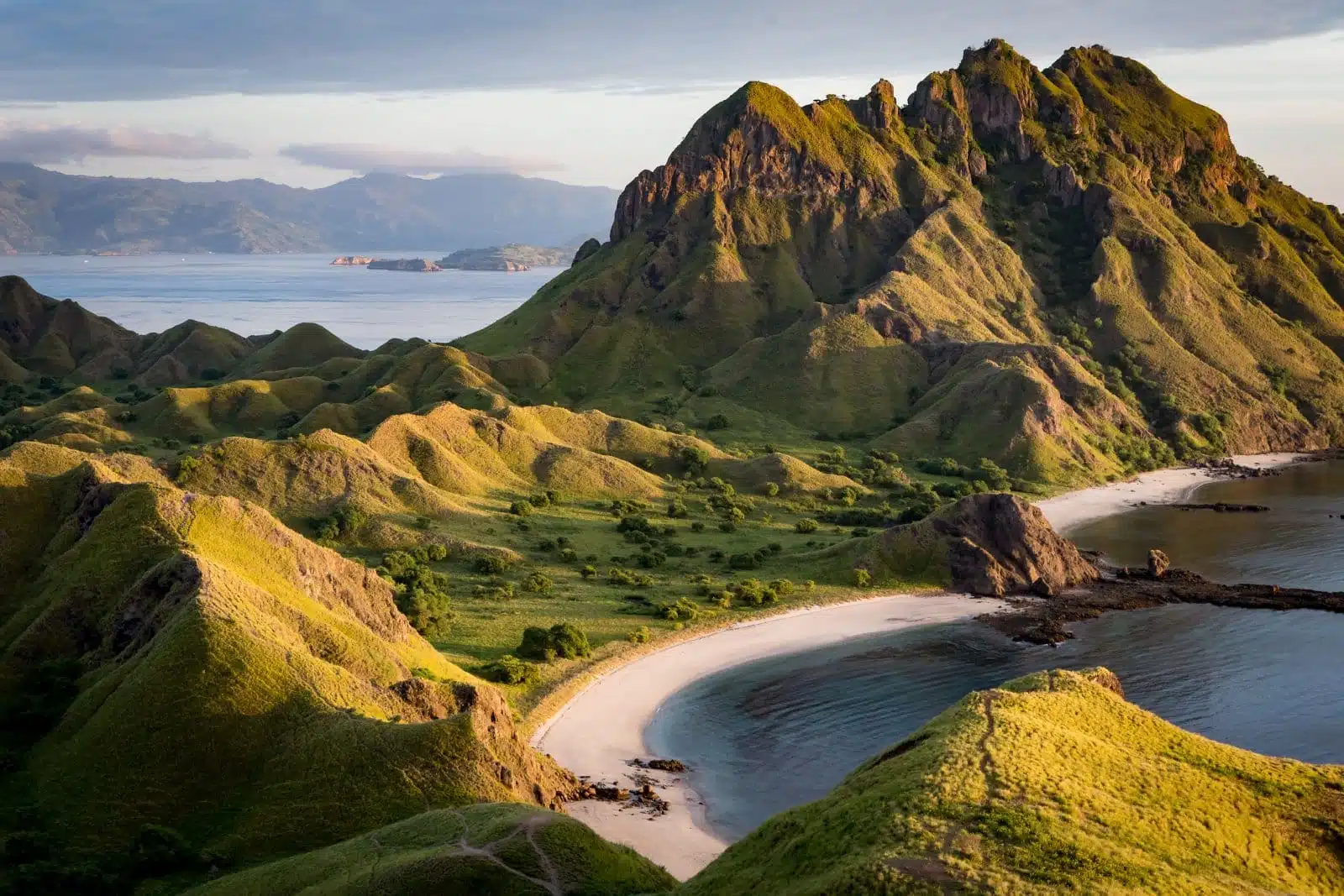
Image Credit: Shutterstock / Donnchans
Komodo National Park, a UNESCO World Heritage site, is a dynamic blend of terrestrial and marine biodiversity. The park’s diverse dive sites offer a range of experiences, from gentle reef dives to exhilarating drifts through nutrient-rich channels, attracting a plethora of marine life. The park’s strong currents are a magnet for marine life, making Komodo an exciting destination for adventurous divers. Liveaboards in Komodo provide access to remote sites, offering an unparalleled opportunity to dive into one of the world’s most biodiverse and ecologically significant regions.
Insider’s Tip: Ensure your liveaboard schedule includes a stop at Manta Alley for a chance to dive with congregations of manta rays. Amira is a favorite amongst divers https://www.amira-indonesia.com/.
When to Travel: The best diving conditions are during the dry season from April to November, with cooler water temperatures attracting more marine life.
How to Get There: Live-aboards usually depart from Labuan Bajo on Flores Island, accessible by flights from Bali or Jakarta.
11. Socorro Island, Mexico
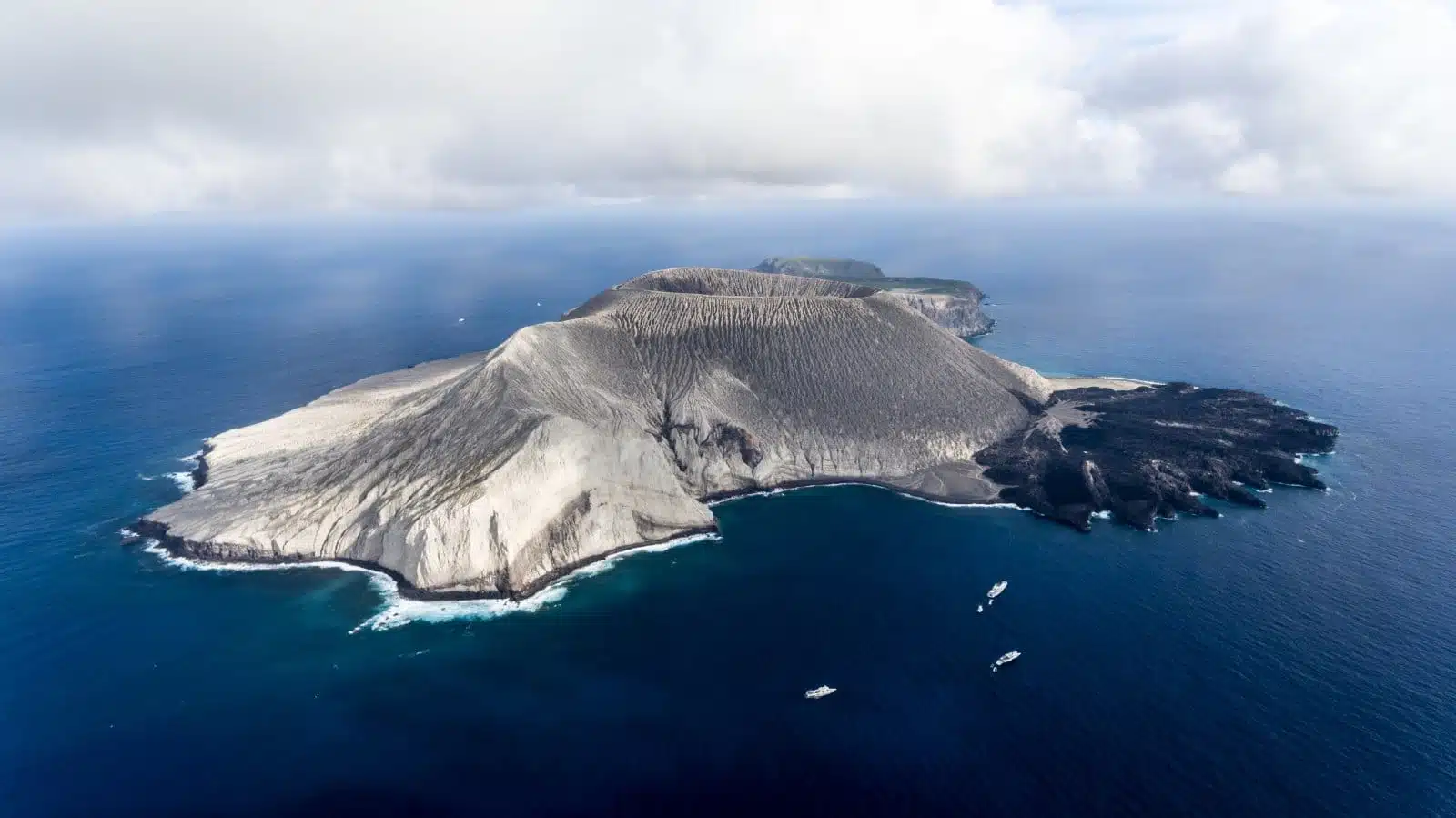
Image Credit: Shutterstock / Leonardo Gonzalez
Socorro Island, part of the Revillagigedo Archipelago, is renowned for its encounters with the ocean’s giants. Divers are drawn to Socorro to interact with friendly giant manta rays, dolphins, whale sharks, and humpback whales. The liveaboard experience in Socorro is defined by big animal encounters, offering a unique opportunity to dive in a remote and pristine environment. The island’s isolation ensures that its underwater wonders are preserved, providing an exclusive window into the lives of some of the ocean’s most majestic inhabitants.
Insider’s Tip: Visit between January and April for the chance to encounter humpback whales and listen to their haunting songs underwater.
When to Travel: The prime diving season is from November to May, with varying attractions like whale sharks early in the season and humpback whales later on.
How to Get There: Liveaboards to Socorro Island depart from Cabo San Lucas or San José del Cabo in Baja California Sur, Mexico, both of which are accessible by international flights.
The Bottom Line

Image credit: Shutterstock / Dudarev Mikhail
Choosing a live-aboard adventure is a commitment to exploring the ocean’s depths in a way that day trips cannot match. It’s an invitation to live at sea, waking each day to a new dive site brimming with potential discoveries. From the shark-filled waters of the Bahamas to the pelagic-rich depths of Socorro Island, each destination offers a unique opportunity to discover a fascinating underwater marine world. As you embark on this journey, remember that the essence of liveaboard diving lies in the thrill of exploration, the camaraderie of fellow divers, and the unparalleled access to the planet’s most extraordinary underwater environments. Let the adventure begin, and dive deep into the wonders that await.
More From The Green Voyage
12 Best Practices for Sustainable Travel in 2024 – How to Travel With Minimal Environmental Impact
Unlocking Hotel Perks – A Traveler’s Guide to Maximizing Hotel Reward Programs for Optimal Benefits
Travel Hacks for Frequent Flyers – 6 Tips and Tricks to Make the Best of Air Travel
The post The 11 Best Liveaboard Diving Destinations in the World 2024 first appeared on The Green Voyage.
Featured Image Credit: Shutterstock / Summer Paradive.
For transparency, this content was partly developed with AI assistance and carefully curated by an experienced editor to be informative and ensure accuracy.
